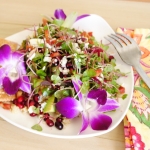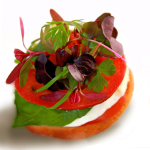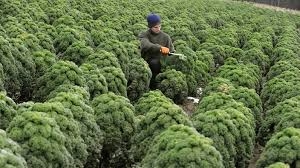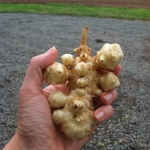Five Exciting New Ways to Use Microgreens
 Everyone knows that microgreens make a great garnish. A handful of micro arugula transforms a boring bowl of Chef Boy-R-Dee into haute cuisine. Add a little micro celery to a Hungry Man Salisbury steak and you’re an instant celebrity chef. Even the lowly peanut butter and jelly sandwich can be made gourmet by a leaf or two of smartly-placed red-veined sorrel.
Everyone knows that microgreens make a great garnish. A handful of micro arugula transforms a boring bowl of Chef Boy-R-Dee into haute cuisine. Add a little micro celery to a Hungry Man Salisbury steak and you’re an instant celebrity chef. Even the lowly peanut butter and jelly sandwich can be made gourmet by a leaf or two of smartly-placed red-veined sorrel.
But did you know that microgreens are good for oh so much more?
The following are five wonderful ways to maximize your micros.
Salads
You’ve had a long, ‘grueling’ day at work. You’re craving a salad, but you’re just too tired to do all that chopping. And then you remember those microgreens you bought a few days ago. Thanks to their diminutive size, they don’t need any chopping. Just mix them in a bowl and boom: instant salad! What’s more, different varieties—mustards, cabbages, radishes—can be mixed together to create new and interesting flavors.
 Hors D’oeuvres
Hors D’oeuvres
Nothing says delicious quite like sliced baguette with humus and microgreens. Or water-crackers with chevre and micro arugula. Or those newfangled pretzel-cracker thingies with cream cheese and micro spring onion. Or thinly-sliced apples with cheddar and micro red mustard. Hungry yet?
What better way to spruce up that pizza pie than with some itty bitty microgreens? Micro arugula and micro basil are the obvious choices, but sunflower and pea leaves should not be ruled out. For a spicy, Mexican-style pie, add some micro cilantro or some black bean shoots. There’s only one caveat: apply the micros after baking.
 Sandwiches
Sandwiches
If the Earl of Sandwich were alive today, his sandwiches would include heaping helpings of microgreens. Mozzarella with tomatoes, micro basil, and olive oil on a chibatta roll. Grilled cheese with stoneground mustard, sautéed onions, and micro watercress. Or cucumber, carrot, tomato, and pea leaves with hummus on rye. The possibilities are endless.
Sunflower Microgreen Balls
This little gem of a recipe is brought to you by Mara Spiropoulos, microgreen enthusiast. Mix 8 ounces of micro sunflower with bread crumbs, Parmesan cheese, butter, onion, eggs; form into balls; and bake for 15 minutes. Let cool and serve as either an appetizer or a side dish. You’ll have a ball baking and savoring these tasty concoctions.









